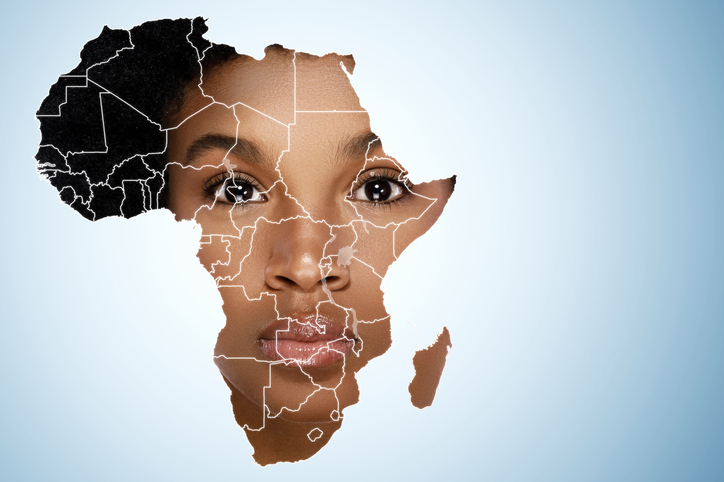If you leave me now, you take away the biggest part of me . . . Ohhhh, WOC 2020 please don’t go. If you leave me now you’ll take away the very heart of me . . .
We’re going to miss WOC 2020.
It’s been amazing catching up with everyone in ophthalmology online, but sadly all good things must come to an end. We’ve seen symposia on AI, verbal jousting over anti-VEGF versus lasers, ocular syphilis statistics and much, much more. The proverbial hats of the Media MICE team are off to the organizers and the International Council of Ophthalmology.
On the last day of the conference we wanted to focus on glaucoma. This common eye condition is a major issue in Africa and in populations worldwide of African descent, like the Caribbean. The condition is the second leading cause of (preventable) blindness in Africa after cataracts.
According to one study, the prevalence of glaucoma in east, central and southern Africa can be conservatively estimated at 10,000 people for every 1 million population. Also, the annual incidence of glaucoma is estimated at 400 new cases per 1 million people. Therefore, we were delighted to visit several fantastic e-posters and symposia on the subject.
Glaucoma is a Problem Coast to Coast

STAB Incision Glaucoma Surgery (SIGS) was one poster that caught our attention. SIGS is a minimally invasive glaucoma surgery where the conjunctiva is drawn forward and a stab incision is made with a 2.8 mm keratome, starting 1.5-2.0 mm behind the limbus into the scleral superficially, and extending into a clear cornea 1 mm in length. The author of the study, Afaf Sir Elkhatim Gamil, aimed to see the outcome of SIGS among glaucoma patients attending Khartoum Eye Teaching Hospital (KETH) in Sudan.
All in all, 45% of eyes examined in the study were treated with SIGS, 32% underwent SIGS + phacoemulsification and the remaining 23% underwent SIGS + peripheral iridectomy. Dr. Gamil reports that 95% of the diseased eyes had postoperative IOP of 20 mm Hg or less. He therefore concluded that the outcome of SIGS in the glaucoma patients was very good, and we would certainly agree (though we’d use more colorful language, naturally).
Switching from east to west, we switched our attention to another poster on glaucoma in Africa: Ocular Perfusion Pressure Differs Between Glaucoma and non-Glaucomatous Subjects in Nigeria (we’re pretty sure it won the longest name prize). The aim was to measure the OPP (ocular perfusion pressure) of newly diagnosed primary open angle glaucoma (POAG) subjects and compare with non-glaucomatous subjects. The study examined 120 subjects and measured them for both hypertension and intraocular pressure.
The study found that the mean IOP in POAG subjects was 24.8±4.1, 26.5±5.6 mm Hg and in non-glaucoma subjects was 15.5±2.9, 15.7±2.9 mm Hg on the right and left eyes, respectively. The report’s authors concluded that OPP should be routinely assessed in all POAG patients despite adequate IOP control.
Symposia from start to finish covered a fascinating array of subjects with relevance to glaucoma. One of the clear standouts was Surgical Options in Populations of African Descent. As we mentioned, glaucoma is as serious an issue in African descended populations as in the continent itself. Dr. Tony Realini at West Virginia University (USA) reported on his research into the matter.
Dr. Realini reports that the key features of a first line therapy in treating glaucoma are efficacy, safety, adherence, cost and availability. He also argued that selective laser trabeculoplasty (SLT) should be used as the first-line treatment option in treating people of African descent with open angle glaucoma (OAG).
More Longevity = More Glaucoma
One of the highlights of the conference was of course the awesome DJ Bananaman Mouse (Media MICE CEO Matt Young) rocking the radio with interviews from both Africa and elsewhere. We’ve had some cracking on-air conversations, and the last day of WOC2020 Virtual® was no different.
We were delighted to welcome the President and CEO of the Glaucoma Research Foundation, Thomas Brunner, to chew the ocular fat. Mr. Brunner said there are exciting treatments emerging in glaucoma, where cataract surgeons are now treating cataracts and glaucoma. Describing this development as valuable, Mr. Brunner added that more exciting moves are on the way.
“There’s just a huge shift in the whole way we think about glaucoma to more of an interventional approach, anything from a minimally invasive device to conventional trabeculotomy,” Mr. Brunner said.
“I think that the COVID-19 crisis has helped to accelerate the acceptance and understanding and it’s a huge opportunity for both diagnostics and diseases like glaucoma, where so much of it could be done remotely so it’s a great opportunity,” he added.
Part of the overarching theme of the conference is that we live in uncertain times thanks to the coronavirus. Certainly that entails difficulty, but also opportunities, as Mr. Brunner alluded to. Telemedicine is a highly exciting development, and even when a disease seems to be increasing, it’s important to remember that it’s not necessarily always a negative.
“Glaucoma is an age-related disease, so the good news is people are living longer and that means more of them will be getting glaucoma. That’s why we see globally, a real increase in glaucoma,” Mr. Brunner said.
See You All (Online) Again Soon!

So as a certain cartoon rascally rabbit once said: “That’s all folks!” WOC2020 Virtual® has been an outstanding online outing and we look forward to repeating the feat in the future. Naturally, we’d all prefer to meet in real life again but if we have to remain online . . . well, it ain’t so bad.
Over the last four days, over 7,000 ophthalmologists from 150 countries checked in to share their experiences, network with their colleagues and (we’re sure) listen to each and every one of our radio shows. Coronavirus loomed large over the proceedings of course but so much more was discussed and debated. We’ll leave it to WOC CEO Dr. Ivo Kocur to sum it up.
“Shifting from a physical to a virtual gathering was essential to keep everyone safe during the pandemic. The ICO says thank you to our 182 member societies and our international faculty for our rich scientific program and commitment to better eye care everywhere,” Dr. Kocur said.
Kudos Dr. Kocur, kudos to you all!



